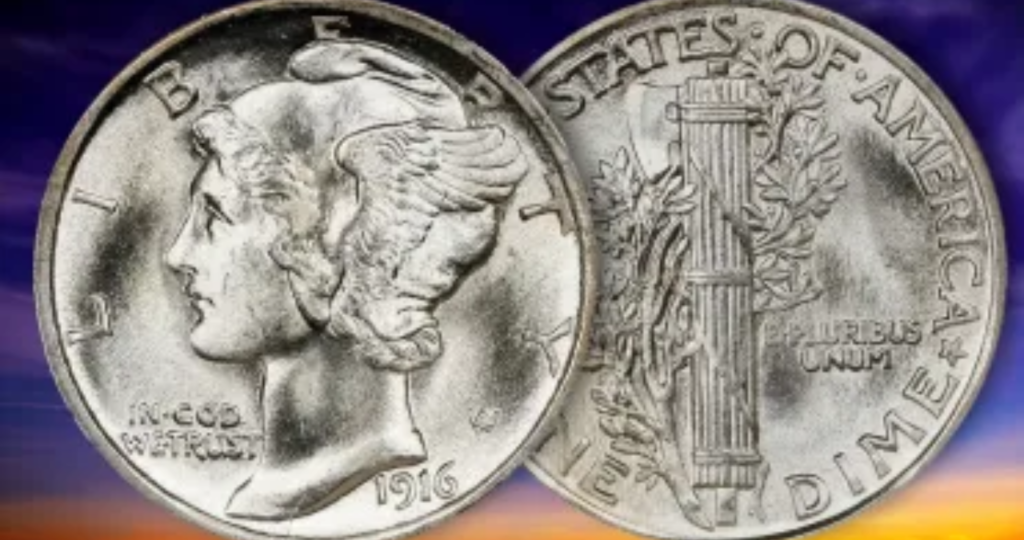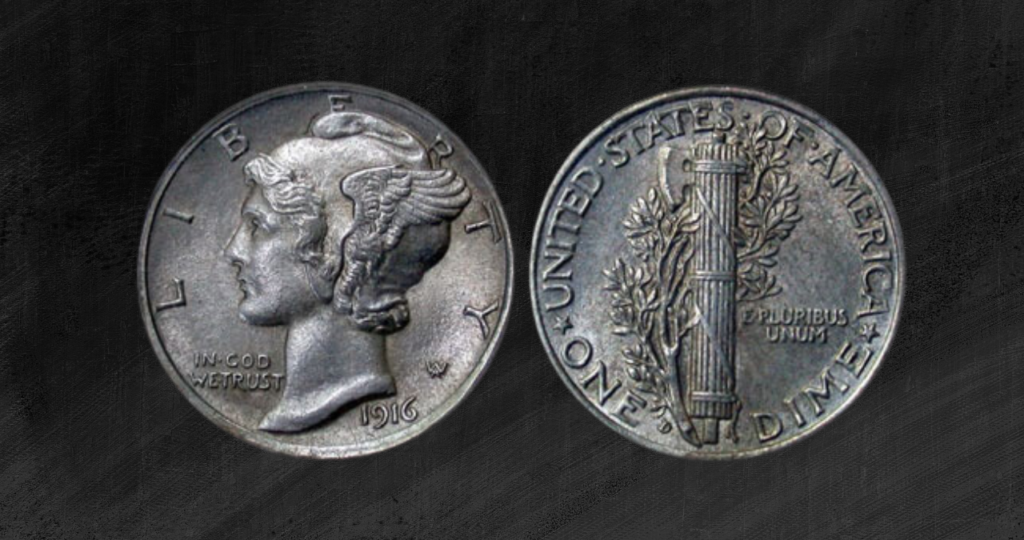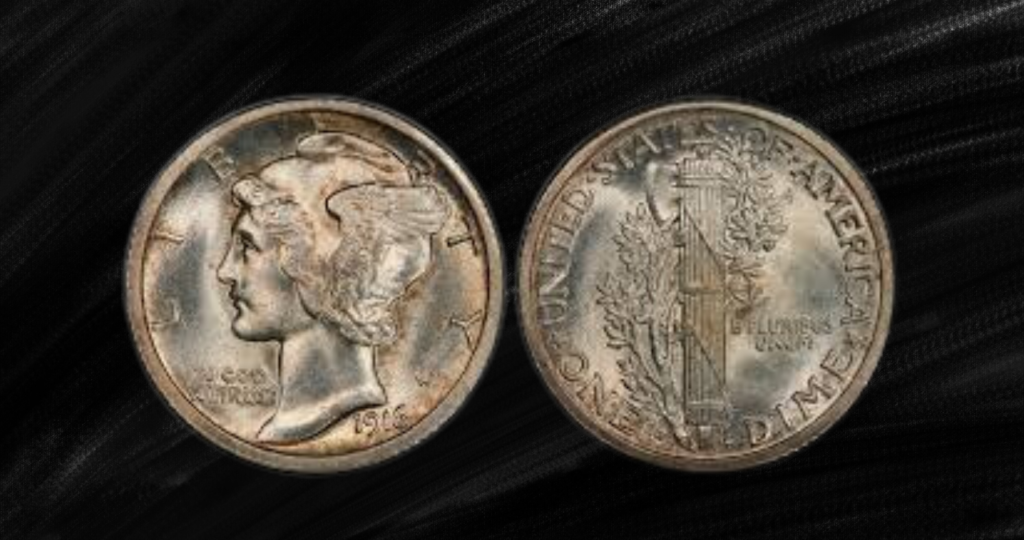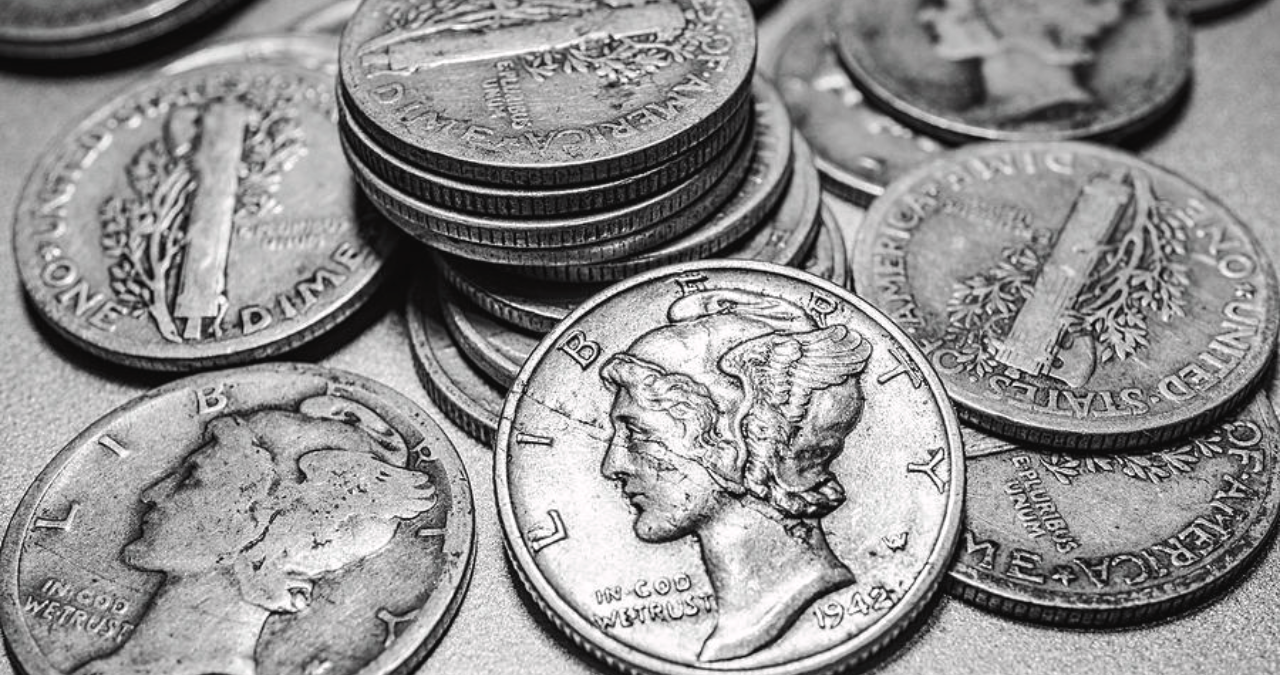The 1916-D Mercury Dime is a true gem for coin collectors, especially for those passionate about American coinage. Issued during the first year of the Mercury Dime series, this coin has gained immense popularity due to its rarity and historic significance. The design, which is often praised for its elegance, was inspired by the French Beaux Arts movement, reflecting the beauty and craftsmanship of the time.
Adolph A. Weinman, the designer, introduced a unique and timeless design that remained in circulation for nearly three decades. This series was eventually replaced by the Roosevelt Dime in 1946, but not before the Mercury Dime left a lasting impression on American numismatics.
In this article, we’ll explore the history, design, and the reasons behind the scarcity of the 1916-D Mercury Dime, along with tips for collectors looking to invest in this iconic coin.
The Historic Background of the 1916-D Mercury Dime

The 1916-D Mercury Dime is a symbol of American resilience, having circulated through some of the most challenging times in U.S. history, including both World Wars and the Great Depression. The “Mercury” nickname comes from the resemblance of Liberty’s winged cap to the Roman god Mercury, though its official name is the Winged Liberty Dime.
Released towards the end of October 1916, the Mercury Dime series stayed in circulation for almost 30 years. It played a significant role in everyday commerce during a time when the United States was undergoing rapid industrialization and global political shifts.
8 Rare European Coins Worth a Millions of Dollars!
Design and Features of the 1916-D Mercury Dime

The 1916-D Mercury Dime is famous for its detailed and artistic design. Let’s take a closer look at its two sides:
Obverse (Front): The obverse side features a portrait of Liberty, wearing a winged cap symbolizing freedom of thought. Her profile is accompanied by the word “LIBERTY” inscribed around the top of the coin. The motto “IN GOD WE TRUST” is placed in the lower left field, while the year “1916” is stamped below the bust. Adolph A. Weinman’s initials, “AW,” are subtly placed behind Liberty’s neck.
Reverse (Back): On the reverse, a Roman fasces, symbolizing authority and power, stands at the center, wrapped in an olive branch to signify peace. Surrounding the design are the inscriptions “UNITED STATES OF AMERICA” and “ONE DIME.” The Denver Mint’s “D” mintmark is placed to the right of the word “ONE.” The motto “E PLURIBUS UNUM” (“Out of Many, One”) appears beside the fasces.
The coin is made of 90% silver, which adds to its appeal among collectors and investors. With a weight of 2.50 grams and a diameter of 17.90 mm, the 1916-D Mercury Dime is relatively small but holds great value.
Why Is the 1916-D Mercury Dime So Scarce?

One of the main reasons the 1916-D Mercury Dime is so sought after is its limited mintage. While the Philadelphia and San Francisco Mints produced over 32 million Mercury Dimes combined in 1916, the Denver Mint only issued 264,000 coins. This makes the 1916-D one of the rarest dimes in U.S. history.
Experts believe that the Denver Mint shifted its focus to producing quarters shortly after starting the dime’s production, leading to the low output. Although the first batch of 1916-D dimes wasn’t delivered until December of that year, they quickly entered circulation, with many of them wearing down over time. Finding well-preserved examples today is incredibly challenging.
The Value of the 1916-D Mercury Dime

The 1916-D Mercury Dime is a highly valuable coin, especially in mint-state condition. While well-worn examples can fetch a few thousand dollars, mint-condition dimes can bring in tens of thousands. For instance, a Mint State (MS) 67 Full Bands (FB) coin sold for a record-breaking $207,000 at a 2010 Heritage auction.
The “Full Bands” designation refers to the sharpness of the bands on the fasces on the reverse. Coins with clear and distinct bands are particularly prized by collectors and often command higher prices.
Because of its rarity and the potential for counterfeit coins, experts recommend purchasing only certified examples from reputable sources. Many counterfeit 1916-D dimes exist, where an added “D” mintmark is placed on a regular 1916 dime. Therefore, buying from trusted dealers and ensuring the coin has been graded and authenticated is crucial.
Collecting the 1916-D Mercury Dime

For collectors looking to acquire a 1916-D Mercury Dime, it’s important to consider the coin’s condition, certification, and price. While it’s tempting to seek out rare and high-grade examples, even lower-grade coins can be a worthwhile investment due to the coin’s historical significance.
If you’re serious about adding this rare dime to your collection, consider certified examples graded by organizations such as PCGS or NGC. Even in low grades, this coin can be a valuable and cherished addition to any collection.
Spend or Save? The Truth About Sacagawea Dollars and Rare U.S. Coins
Conclusion
The 1916-D Mercury Dime is not just a beautiful coin; it’s a piece of American history. With its limited mintage, artistic design, and association with key moments in U.S. history, this coin is one of the most cherished among collectors. If you’re fortunate enough to find one, whether in a modest grade or mint condition, the 1916-D Mercury Dime is sure to be a treasure in any collection.

